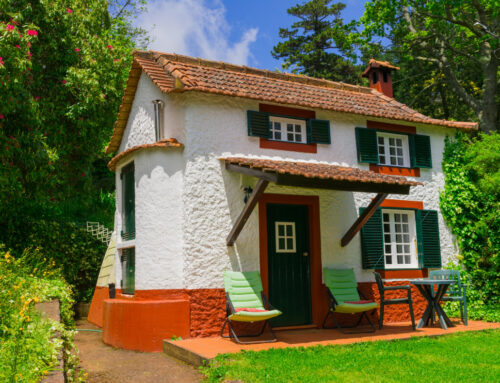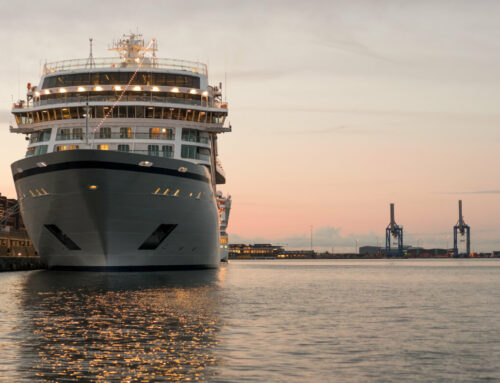Synopsis: When Sustainable architecture is your goal, what choices do you have for water efficiency?
Application: The BioBarrier® is the first blackwater/Graywater treatment system certified for water reuse.
Things were finally falling into place for the Gerber family’s long-anticipated move to a home they’d been planning for what seemed like forever. They’d considered fourteen lots. Reviewed eight different types of flooring. Compared five shades of blue for the bedroom. Angie and Mike Gerber had reached a consensus on each decision along the way. But early in their process, they’d agreed that before any decision could be made, it had to meet their high standards for environmental responsibility. In fact, in the Gerber’s own “couple’s shorthand,” everything had to be deemed “sustainable” before it made the approved list. They sought products to minimize the negative environmental impact of their home by incorporating efficiency the use of materials and energy in their developmental space.
Angie and Mike considered themselves to be more than just environmentally aware; they kidded each other that maybe they were slightly environmentally obsessed. It stemmed from their chosen career passions—Angie as a fourth-grade science teacher and Mike as a land-use attorney—and spilled over into their day-to-day life.
Focus on the important things
This “sustainable architecture” focus had colored their approach to their new home from the start. They wanted to reuse as much as possible and maintain a sustainability theme throughout planning. They saw it as an opportunity to create a small footprint, not only with the house itself, but with landscaping as well. Angie was looking forward to planting both a native flower bed and vegetable garden as soon as construction was finished.
They felt they had little choice in their utilities. With their chosen lot being on the outskirts of the city, the Gerbers would rely on a well water for source water and septic system. But as Mike was researching local companies to arrange installation, he discovered that his ideal location for his drainfield is too close to his ground water source. He found out about water reuse options using something called an ATU (Advanced Treatment Unit) MBR (Membrane BioReactor) that makes wastewater suitable for irrigation, even on edible plants. When Mike brought this up to Angie, she was instantly in agreement: an ATU MBR system was an ideal fit for their plans. Angie volunteered to research system choices.
Her search uncovered a number of ATU system possibilities, but only one was an MBR. She was soon engulfed in details and longed for an unbiased opinion. She also stumbled upon reports of a bionic pollution-fighting duo named Aerobe and Robust.
“This might be the solution to our situation,” she said to herself as she picked up the phone.
A friendly female voice answered, “Hello and good afternoon. This is Aerobe. How may I help you today?”
Angie responded, “Well, I sure hope you can offer me some guidance. My husband and I are building a home that will be on a septic system. We are hoping to reuse the water to irrigate our garden. Can you help me? I’m, um, a little overwhelmed.”
“Absolutely!” Aerobe responded. “I assume you found my contact information on the Internet; so first of all, thank you for giving me a call. I think it’s splendid that you are interested in reusing water for your garden. I can give you a couple of options that render wastewater virus free for irrigation and safe for human contact. Could I stop by to see your property and get a few more details from you?”
“The only thing on my agenda today was to get an appointment scheduled for this treatment system. I’m available all day.” Angie replied and read her address to Aerobe. They agreed on a time to meet.
Angie was glad she had seen photos of Aerobe during her web search. Otherwise, she’d have been totally unprepared for this definitely feminine, but also definitely robotic figure gliding toward her. As it was, she was momentarily tongue-tied in Aerobe’s presence.
Aerobe was accustomed to such first meetings and immediately tried to put Angie at ease.
“I’m so glad you called me, Angie,” Aerobe said. “It’s great to meet you face to face. First thing, I’d like to take a look around the property and then we can go over any questions or concerns you have.”
Angie managed a smile and a nod as Aerobe began exploring the lot, taking photos and measurements.
Floating back to Angie, Aerobe explained that the property was ideal for a BioBarrier® membrane bioreactor for water reuse. Not only was the lot a blank slate; it was flat with minimal obstacles. She offered product spec sheets and information to Angie and added, “Your garden is going to love what you’re planning to do. Now, I’m sure you have questions for me. So where do you want to start?”
By now Angie was comfortable with Aerobe and began asking all the questions she’d been compiling since her research. “Who do I need to contact? What else should I do before we can get started? How quickly can I expect a proposal from you?”
Her eagerness made Aerobe smile. “Well, Angie, before we get started we need to make sure the area is clear of any buried utility lines. Can you make a call to the utility companies to get these marked off? Other than that, I have all the information I need and plenty of photos to prepare a proposal for you and Mike.”
Aerobe added, “I work with a group of great individuals. Unless you have someone else in mind, we can get started right away. As soon as I get back to the office and make some phone calls, we can get things rolling.”
Angie responded happily, “I guess you can tell how anxious I am to get going. I’m so impressed with the confidence you have in your products! I can’t wait to tell Mike about all this. I can practically smell the rose blossoms already!”
Just as Angie had anticipated, Mike was as eager as she was to add this to their plan. And even more so when they reviewed the proposal that Aerobe presented.
Much activity filled the next weeks.
DigSafe came out and marked the site for existing utility lines. Angie coordinated with Aerobe to have the yard prepared and the tank set in place, all ready for the BioMicrobics BioBarrier® system.
Installation went smoothly as planned and was followed in quick progression by irrigation supply trucks and landscaping trucks ready to plant the flowers, rose bushes, and trees that Angie and Mike had picked out.
During installation and through the Gerber’s final move-in, Aerobe had stayed in contact with Angie. They frequently chatted about Angie’s plans for her garden.
Late into the summer, Angie received another call from Aerobe.
“Hi, Angie,” she said. “I’ve been contacted by a magazine that’s distributed to individuals and companies in the onsite wastewater treatment industry. They want to illustrate a good example of wastewater reuse and I thought of you. They plan to feature this case study in their next issue to explain the system technology to their readers and let the pictures showcase the possibilities. May we stop by this afternoon?”
“Of course, Aerobe, come on over,” Angie agreed. “The garden is in full bloom now. You might say everything’s coming up roses.”
They both laughed over this well-worn phrase, then Angie added, “But now you owe me a favor, right? When the school year starts, would you come and speak to my fourth graders about responsible water use? They’ll bombard you with questions, but they’re really good kids.”
“I guess there’s no way I can refuse that one,” Aerobe responded. “I love to get kids excited about science, too. Besides, to borrow your own phrase, it’s a ‘sustainable’ thing to do, right? See you this afternoon, Angie.”
Angie hung up the phone and walked out to her garden to make sure it was picture perfect. But she was already thinking ahead to the school year, imagining the surprise on her students’ faces when Aerobe flew into the classroom.






